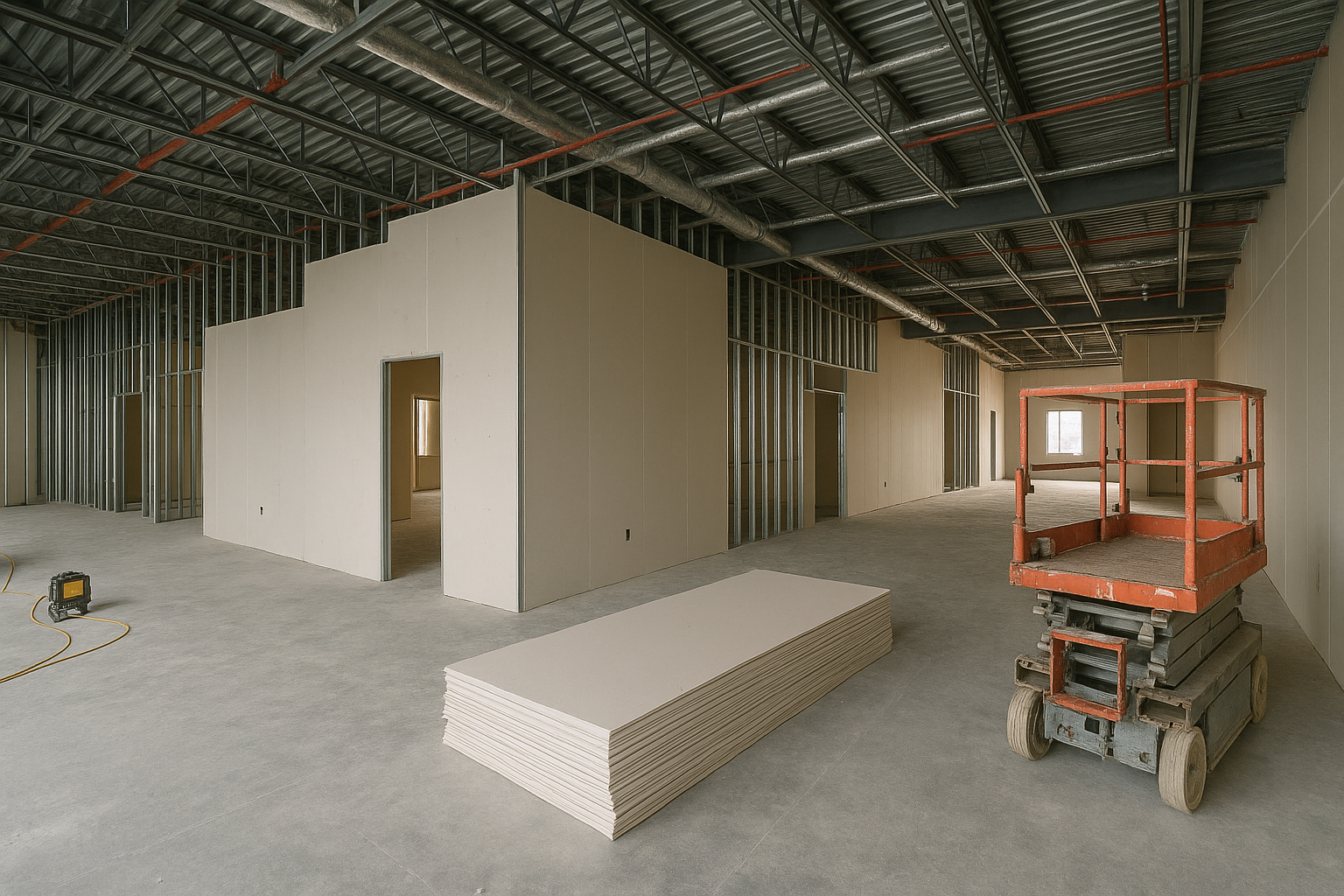
When estimating drywall costs, many teams default to average square footage across an entire project. However, this method often overlooks a critical factor: room type. Different rooms introduce varied complexity, installation conditions, and material demands. For architects, engineers, and general contractors aiming to improve cost precision and reduce change orders, breaking down drywall costs by room type is not just a best practice—it’s a competitive advantage.
Rooms aren’t created equal in drywall planning. A straightforward rectangular office has vastly different needs compared to a curved auditorium, a high-ceiling lobby, or a bathroom requiring moisture-resistant assemblies. Estimating each as if they’re the same results in flawed bids and painful mid-project corrections.
Blending drywall rates across diverse room types leads to inaccurate unit costs. While it may speed up early estimates, it hides true cost drivers and can introduce margin risk later. Accurate estimation depends on isolating variables—and room type is one of the most impactful.
Modern platforms like Active Estimating allow users to classify and segment room types within the model or estimate, enabling dynamic rate application based on known complexity. By standardizing inputs for each room category, estimators gain a clearer, more traceable cost structure.
When room type data is layered into your takeoff and estimating processes, it becomes easier for project managers, trades, and owners to review assumptions. Room-specific cost breakdowns improve transparency and support better-informed value engineering decisions.
Follow these best practices to operationalize room-based estimating:
A high-performing drywall estimating solution simplifies the complexity of room-based cost tracking. From automated classification to scope-specific reporting, software makes it easier to build, validate, and communicate estimates broken down by space type—without the overhead of manual processing.
Room type matters in drywall estimates—and your bottom line reflects how well you handle that complexity. By adopting a data-driven, room-specific approach to estimating, construction teams can produce more accurate bids, reduce surprises in the field, and align expectations from concept to completion. With Active Estimating, breaking down your drywall costs by room type becomes an operational strength rather than an afterthought.
Richard Schoener
richard@activeestimating.com
(530) 601-7899
Active Estimating
508 2nd Street, Suite 208
Davis, California 95616
https://www.activeestimating.com/
https://www.activeestimating.com/drywall-estimating-software
Schedule a personalized demo to see how Active Estimating can work for your specific needs.
